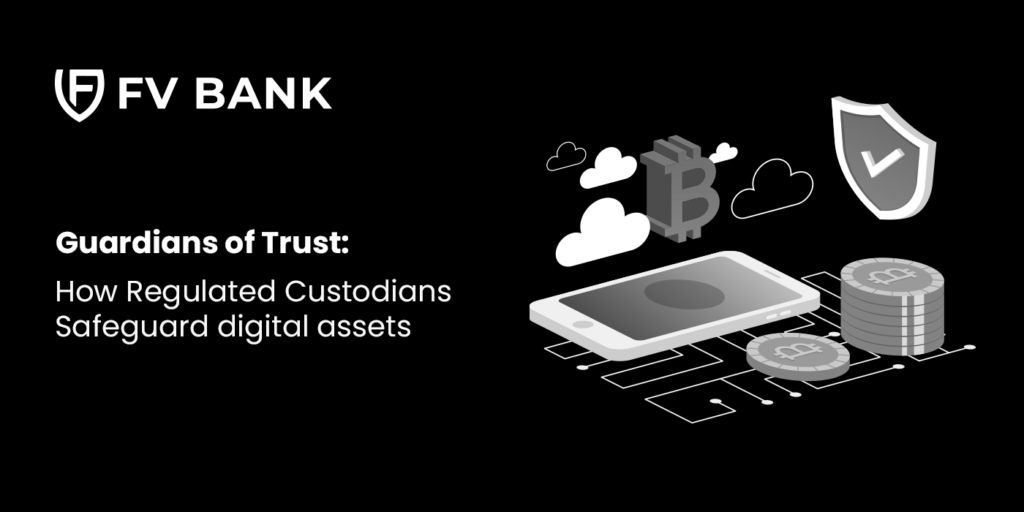Digital assets have propelled themselves to the forefront of modern commerce, reshaping the operational landscape for businesses worldwide. Ranging from cryptocurrencies and tokens to intellectual property and data, these assets offer a myriad of opportunities for revenue generation, enhanced customer experiences, streamlined processes, and innovation. As companies of all sizes pivot towards digitalization, the efficient and secure management of these assets becomes paramount. This is where digital asset custody providers step in as a fundamental necessity, providing the structured framework necessary to oversee and govern these valuable digital resources in a secure and regulated fashion.
The Significance of Digital Asset Custody
In today’s rapidly evolving digital landscape, the importance of digital asset custody cannot be overstated. It serves as the backbone for ensuring digital assets’ safekeeping, availability, reliability, and integrity. Beyond mere storage, custodianship extends to implementing practices that comply with legal and regulatory requirements, mitigating security threats, and enabling seamless transactions domestically and internationally. As cyber threats continue to escalate, robust custody solutions are imperative to safeguard assets from unauthorized access, theft, and other malicious activities. Moreover, the evolving regulatory landscape underscores the need for custodial practices that ensure compliance with stringent regulations, offering peace of mind to businesses and investors alike.
The Role and Functions of Custodians
Custodians play a multifaceted role in the digital asset ecosystem, mirroring their traditional role in capital markets. They act as trusted guardians, securely holding investors’ electronic or physical assets and employing their market expertise to minimize risks associated with fraud, theft, or loss. Beyond safekeeping, custodians facilitate efficient settlement of trades, streamline the trading process, and ensure compliance with regulatory requirements. In traditional capital markets, custodians serve as intermediaries between investors, brokers, and exchanges, enhancing market efficiency and contributing to the smooth functioning of financial transactions.
Outsourcing Custody: The Key Considerations
Before outsourcing custody, businesses must carefully evaluate several factors to ensure they choose the right custodian. The essential considerations to keep in mind before selecting a custodian include:
- Expertise and Background: Assess the custodian’s experience and track record.
- Location and Market Commitment: Determine the custodian’s geographical base and its dedication to the market they are servicing
- Global Network Access: Evaluate whether the custodian offers access to a broad network of trading venues and service providers on a global scale.
- Security Measures: What are the security protocols implemented by the custodian to safeguard assets?
- Asset Handling and Risk Mitigation: Understand how the custodian manages asset holding and addresses potential co-mingling risks, along with strategies for risk mitigation.
- Risk Management: Inquire about the custodian’s approach to handling concentration and counterparty risks.
- Transactional Capabilities: Assess the range of transactional functionalities provided by the custodian, including access to real-time trading options.
- Fee Structure: Review the fees charged by the custodian for its services.
- Additional Services: Explore any supplementary services and perks available through the custodian beyond basic custody functions.
Building Trust Through Regulation
The regulatory landscape surrounding digital assets is rapidly evolving globally. Governments and regulatory bodies are grappling with the unique challenges posed by cryptocurrencies and other digital assets, leading to the development of new regulations and guidelines – albeit slower than the cryptocurrency industry would like. These regulations aim to provide clarity and establish legal frameworks for digital asset custody, addressing concerns related to security, consumer protection, anti-money laundering (AML), and know-your-customer (KYC) requirements.
Institutional investors are increasingly recognizing the potential of digital assets as an alternative asset class offering diversification and potential returns. This growing institutional interest is driving demand for institutional-grade custody solutions that meet stringent security, compliance, and risk management standards
Regulated custodians play a pivotal role in building trust and confidence in the digital asset market. By adhering to strict regulatory frameworks, custodians ensure financial soundness, robust security measures, and operational transparency. Regulatory compliance, including ID verification, KYC procedures, and AML regulations, helps prevent fraud, money laundering, and other illegal activities, fostering a fair and trustworthy environment for digital asset investments. For institutional investors and individual investors alike, regulated custodians offer a sense of security, knowing their assets are safeguarded by trusted custodians operating within established regulatory frameworks.
Future Trends and Innovations
Looking ahead, the future of digital asset custody is filled with promising trends and innovations. Decentralized custodial solutions, advanced security technologies, and expanded service offerings are on the horizon. Regulated custodians are poised to play an even more central role as new asset classes and investment opportunities emerge. By prioritizing security, transparency, and innovation, custodians contribute to the growth and stability of the digital asset market, paving the way for a future where everyone can confidently participate in this new era of finance.
One thing remains certain: the success of the digital asset market hinges on the continued diligence and innovation of regulated custodians. By prioritizing security, transparency, and trust, they pave the way for a future where everyone can confidently participate in this new era of finance.
Security technologies are also continuously improving. We can expect advancements in encryption methods, multi-factor authentication, and even the integration of artificial intelligence to detect and prevent cyber threats. These innovations will further strengthen custodians’ ability to safeguard digital assets.
Technological Innovations and Expansion of Asset Types
The digital asset custody industry is witnessing rapid technological innovation aimed at enhancing security, efficiency, and scalability. Custodians are leveraging technologies such as blockchain, multi-party computation (MPC), hardware security modules (HSMs), and cryptographic techniques to strengthen the security of digital asset storage and transactions.
The digital asset landscape is expanding beyond cryptocurrencies to include a diverse range of asset types, such as tokenized securities and digital representations of real-world assets. This proliferation of asset classes presents both opportunities and challenges for digital asset custody providers.
Interoperability and Integration
Interoperability and integration are becoming increasingly important considerations in digital asset custody. As the digital asset ecosystem grows and becomes more interconnected, investors require seamless access to custody services across multiple platforms, protocols, and networks.
Custodians are collaborating with exchanges, trading platforms, decentralized finance (DeFi) protocols, and traditional financial institutions to enable interoperability and integration of custody services. By establishing secure APIs, standardized protocols, and cross-platform compatibility, custodians facilitate frictionless asset transfers, trading, and settlement for investors. This interoperability enhances liquidity, accessibility, and usability of digital assets while ensuring robust security and compliance standards are maintained.
Digital asset custody serves as a cornerstone of the modern economy, ensuring the secure management and governance of valuable digital assets. By embracing innovative custodial solutions and regulatory frameworks, businesses, investors, and enterprises can navigate the complexities of the digital asset landscape with confidence and trust. As the digital asset market continues to evolve, custodians will remain at the forefront, safeguarding assets and enabling the seamless flow of transactions in an increasingly digital world.
Conclusion
In the ever-expanding world of digital assets, regulated custodians provide secure storage for valuable digital holdings, acting like high-tech safety deposit boxes with an extra layer of protection – strict government oversight. These regulations ensure financial soundness, robust security measures, and transparency in custodian operations.
Regulated custodians don’t just keep your assets safe; they also play a vital role in mitigating risks and ensuring compliance. They help prevent fraud, money laundering, and other illegal activities, fostering a fair and trustworthy digital asset market.




